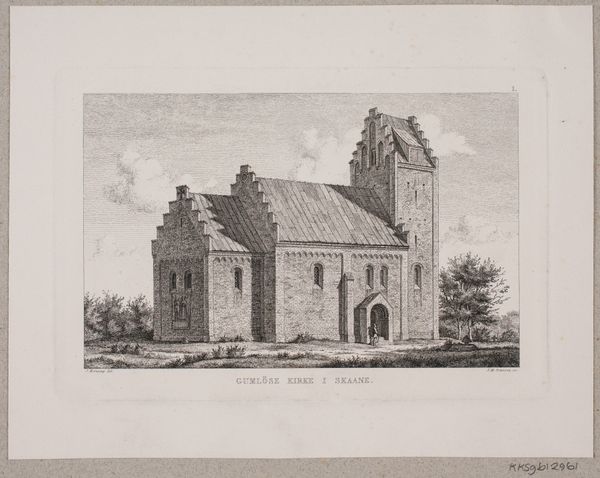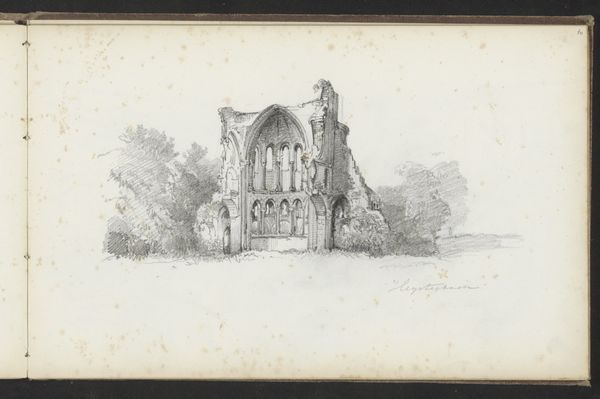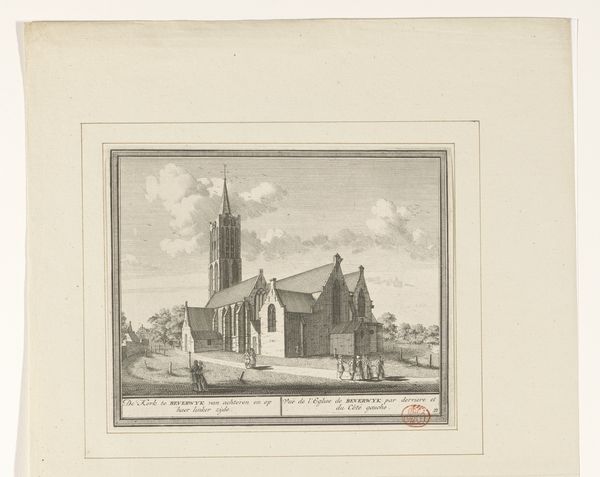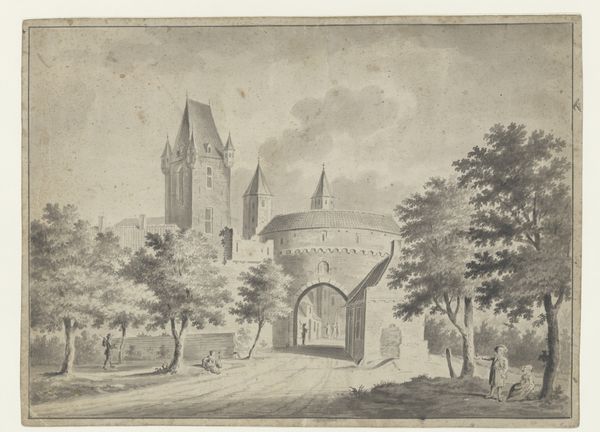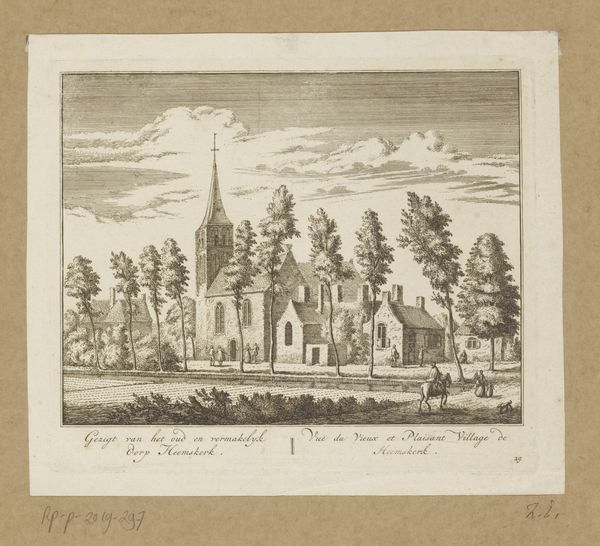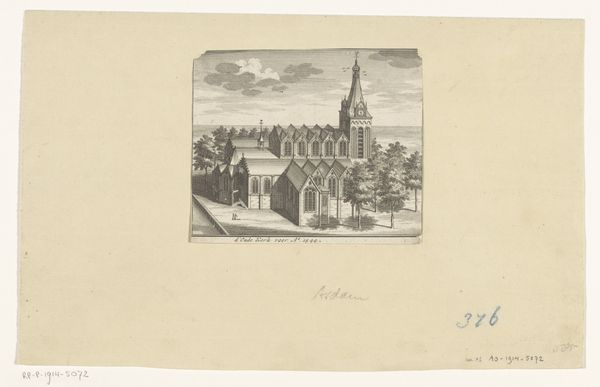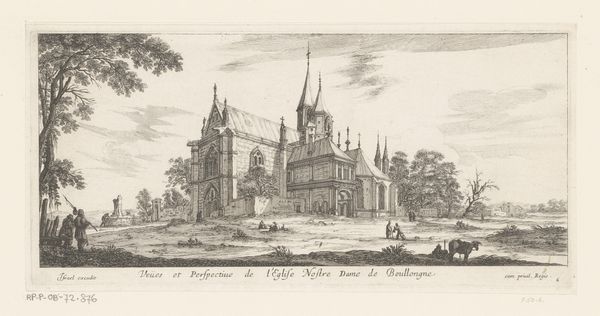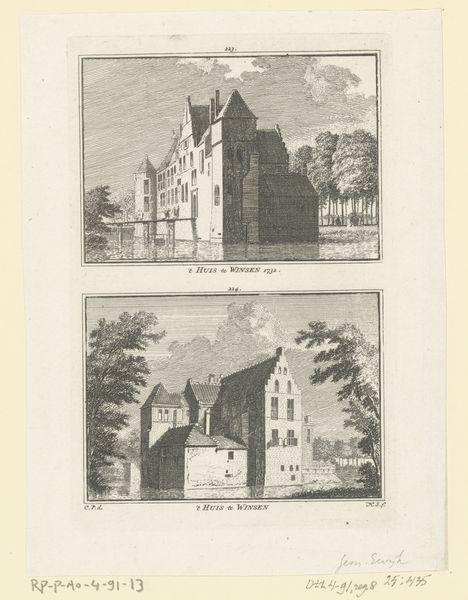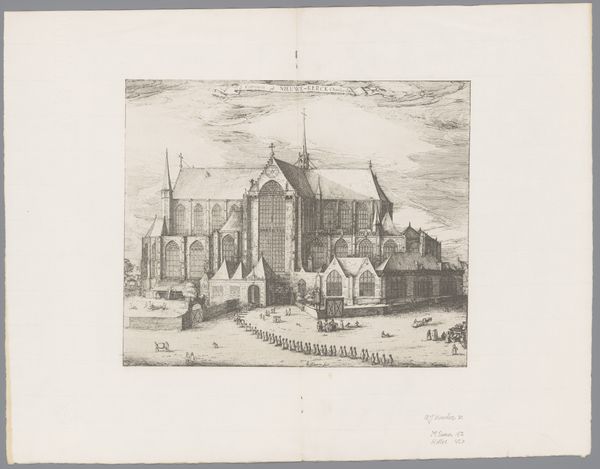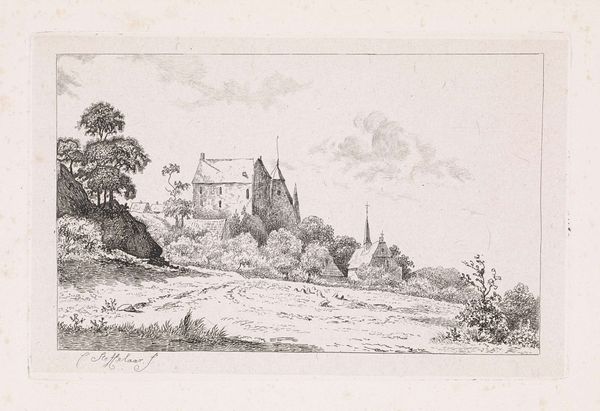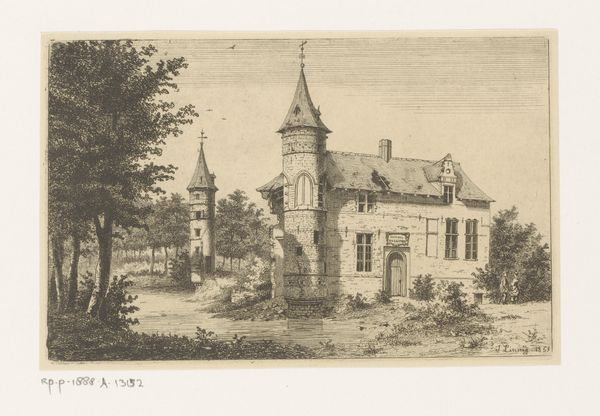
print, etching, architecture
#
baroque
#
dutch-golden-age
# print
#
etching
#
landscape
#
etching
#
architecture
Dimensions: height 93 mm, width 133 mm
Copyright: Rijks Museum: Open Domain
Hendrik Spilman made this print of Sint-Antonius Abt in Terheijden, Netherlands, sometime in the 18th century. In the Dutch Golden Age, the production of topographical prints became a booming industry, feeding into a growing sense of national and regional identity. This print would have contributed to the way people thought about their place within a broader social and geographical context. The church is presented in a way that emphasizes its stability and importance, acting as a focal point for the community. It also hints at the cultural significance of the church in a society deeply shaped by religious institutions. To understand this print more fully, one could delve into the archives of local historical societies. These resources often reveal how the church functioned within the community. Art becomes meaningful when we consider the circumstances of its creation and reception.
Comments
No comments
Be the first to comment and join the conversation on the ultimate creative platform.
